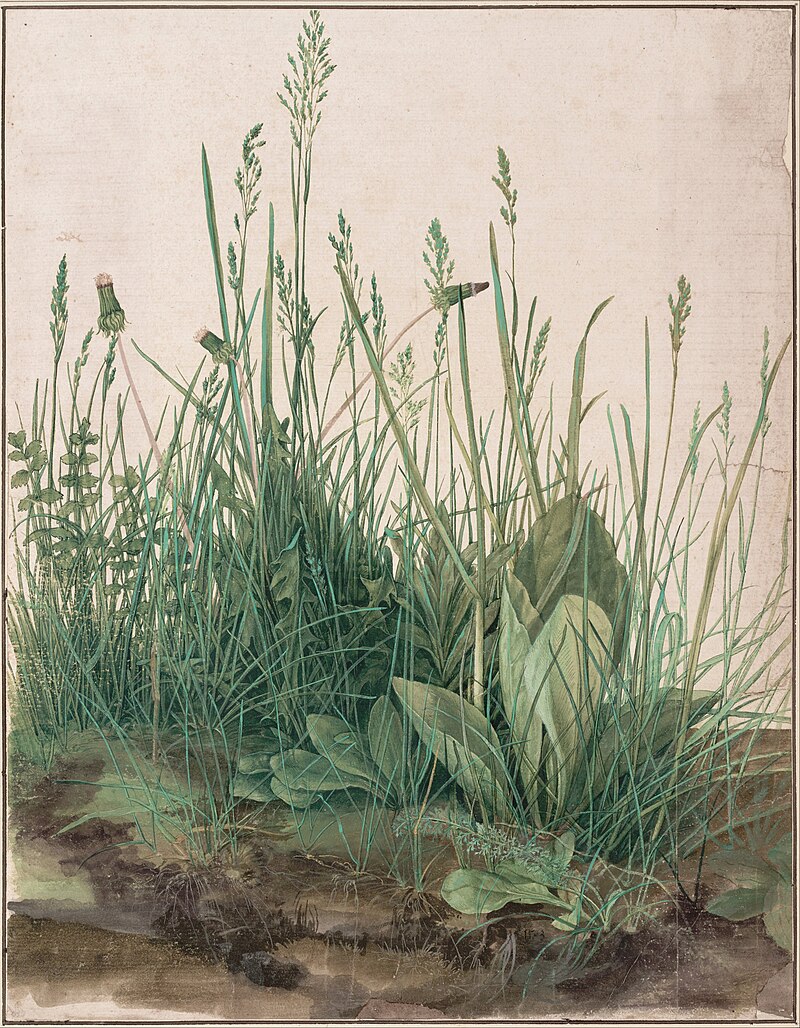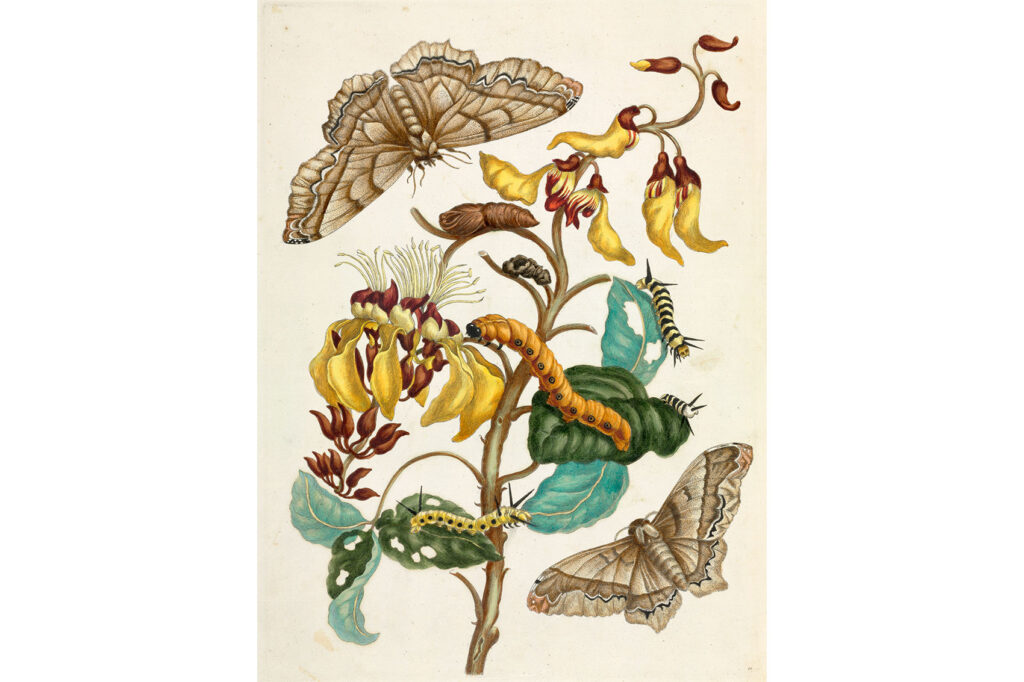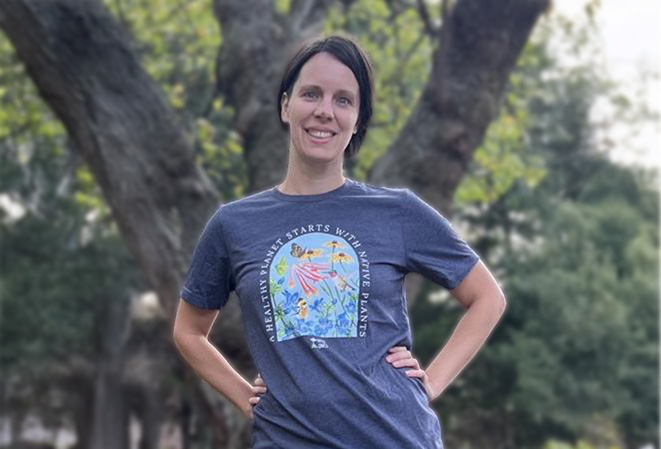Art has long been a powerful tool for storytelling, and in the world of conservation, it serves as a voice for native plants and biodiversity. From ancient botanical illustrations to community murals and public installations, artists have captured the beauty of native plants while advocating for their protection. As ecosystems face increasing threats from habitat loss and climate change, the fusion of art and environmental awareness plays a crucial role. Whether through detailed botanical prints, immersive art exhibits, or photo contests, artists continue to highlight the importance of native plants, fostering a deeper connection between people and the ecosystems that sustain them.
Art isn’t just for galleries – it’s one of the most powerful tools in native plant conservation. Art has the capacity to translate complex ecological concepts into accessible and emotionally resonant experiences. Art can communicate the beauty and value of native plants in ways that scientific reports or data alone cannot. Through visual storytelling, artists capture the resilience, diversity, and fragility of native plants. Public art installations, botanical illustrations, and community art projects not only celebrate native plants but also educate viewers about their ecological roles and the urgent need for their protection.
The tradition of botanical art can be traced back to ancient civilizations. Egyptians depicted plants like lotus flowers in tomb paintings, symbolizing life and regeneration, while Greek and Roman scholars documented local flora for use in medicine and agriculture. Early botanical illustrations appeared in medicinal texts, often as woodcuts or hand-painted manuscripts.
For early botanists, artists were often the first to officially document many of the plants we know today. Illustrations were used to support the work of botanists and horticulturists, describing the plant for the science records. These illustrations appear in plant inventories, journals, and field guides.
Plants and flowers were also the focus of artistic expression. Albrecht Dürer’s watercolor Great Piece of Turf (1503) is a prime example, showcasing wild plants in lifelike detail. His work elevated a piece of turf to an enduring piece of art. This work is a study of a seemingly unordered group of wild plants including cock’s-foot (Dactylis glomerata), creeping bent (Agrostis stolonifera), smooth meadow-grass (Poa pratensis), daisy (Bellis perennis), dandelion (Taraxacum officinale), germander speedwell (Veronica chamaedrys), greater plantain (Plantago major), hound’s-tongue (Cynoglossum officinale), and yarrow (Achillea millefolium).

German entomologist and naturalist Maria Sibylla Merian is known for her detailed studies of insects, particularly the relationship of moths and butterflies to their host plants during the late 1600s. Merian was one of the first to closely observe and record the process of insect metamorphosis. As a young artist, Merian created floral patterns and botanical designs intended for embroidery, which were highly sought after by artisans. Her botanical art offered a blend of scientific accuracy with artistic expression, depicting plants in naturalistic compositions rather than solo.



This integration of plants and pollinators demonstrated in Merian’s work reflects the interconnectedness of species and ecosystems. Hundreds of years later, this same concept is a salient feature of works by artists such as John James Audubon, who illustrated native plants as part of his bird studies.
Native plants form the backbone of local ecosystems. They are plants that have evolved and grown in a specific region or ecosystem without human intervention for thousands of years. They are a vital part of the balance of nature and support local wildlife.
A crucial aspect of native plant advocacy is the concept of “sense of place”—the unique identity and emotional connection people feel toward specific environments. Native plants are central to creating a sense of place, as they root landscapes in their natural heritage and reflect the local ecology. Art can amplify this connection by depicting native flora in ways that highlight their cultural and ecological significance.
According to the National Endowment for the Arts (NEA), integrating art and cultural practices into community development can strengthen social cohesion and promote well-being. By incorporating native plants into public art and shared spaces, communities can create vibrant, meaningful environments that reflect their ecological roots. Projects like murals featuring native wildflowers or sculptures inspired by local plant species help reinforce community identity while promoting biodiversity (Creative Placemaking, NEA).
Community Engagement Through Art
Art invites participation. Community-based art projects, such as murals or collaborative installations, can unite neighborhoods around the shared goal of planting and preserving native plants. Workshops and art contests provide platforms for people of all ages to learn about local flora and contribute their voices to the conservation conversation.
For example, Wild Ones’ annual photo contest encourages members to capture images of native plants, people and wildlife, showcasing the beauty of native ecosystems. These photos are highlighted across Wild One’s educational materials and social media channels. By engaging the community in artistic expression, the contest fosters a deeper appreciation for native flora and motivates conservation efforts.

Photo by Tim Lindenbaum, 2024 photo contest entry.
Wild Ones and the PlantArte Native Plant Art Contest

Wild Ones is proud to be a native plant art exhibit partner for the PlantArte Native Plant Art Contest, an initiative that celebrates the beauty and importance of native plants through artistic expression. This unique contest, hosted by Arte Sana’s Plants & People / Plantas y Gente project, invites artists of all ages to create handmade botanical art that highlights the vital role native plants play in preserving biodiversity and supporting local ecosystems.
In honoring the beautiful resilience and many gifts of native plants, we hope to help promote local and regional ecology through community engagement and stewardship.
By collaborating on this event, Wild Ones furthers its mission of promoting native landscapes through education, advocacy, and collaborative action. We join several other exhibit partners including
The contest not only raises awareness about native plants but also fosters community engagement, inspiring participants to connect with the natural world in creative and meaningful ways. For more information about how to participate, visit the PlantArte website.

Important Dates:
- Dec. 16, 2024 – Call for art opens
- April 2, 2025 – Art entry deadline
- April 22, 2025 – Earth Day launch of the 2025 exhibit
Themes include:
- Wildflowers / Flores silvestres
- Plants of my people / Las plantas de mi gente
- Resilience / Resiliencia
- Native plants beyond borders / Plantas nativas más allá de la frontera
- Plants & critters / Plantas y fauna
Whether through community art projects, photo contests, or exhibits like PlantArte, art connects people to nature, inspiring action and fostering a deeper appreciation for the plants that sustain wildlife and ecosystems. art, artists help shift perspectives and foster a sense of responsibility toward environmental stewardship. This emotional connection often translates into advocacy, inspiring communities to plant native species, remove invasive plants, and support conservation initiatives.
Further Readings
“Plant-Human Relations: How Can Art Foster Positive Perceptions of Weeds in Cities?” by Christopher Kennedy explores how art can shift negative perceptions of urban weeds, highlighting their ecological benefits and resilience. Kennedy suggests that creative expression can foster empathy for overlooked plants, encouraging a more balanced view of their role in urban ecosystems.
“Are Plants Art?” from Gardening Gone Wild explores the relationship between plants and art, emphasizing that while plants themselves are not art, they inspire human creativity and aesthetic appreciation. The author reflects on how humans perceive beauty in the natural world and how this perception influences gardening practices and ecological awareness.

